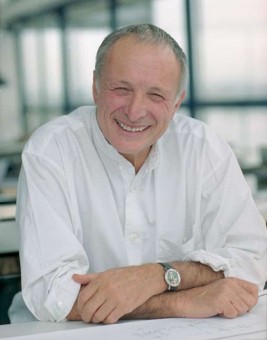
And the Winner is... Richard Rogers, finalmente
di Marcello Silvestro
Il Pritzker Prize 2007, il cosiddetto nobel per l'Architettura, è stato assegnato a Richard Rogers, finalmente. Un premio atteso da quando fu assegnato a Renzo Piano nel 1998 e a Norman Foster nel 1999.

Richard Rogers
Photo by Dan Stevens
Courtesy Richard Rogers Partnership
All'inizio della sua carriera, Rogers ha lavorato come partner sia con Foster sia, in seguito, con Piano.
Rogers e Norman Foster si incontrano nel 1961 presso la Yale University per un Master; viaggiano in lungo e il largo per il continente americano, a visitare il maggior numero di edifici di Wright e tante altre architetture comprese quelle di Mies van der Rohe e Louis Kahn. Quando terminano lo studio alla Yale, compiono un viaggio in California da Skidmore, Owings & Merrill (SOM) e a visitare le opere di Rudolph Schindler, Pierre Koenig, Craig Ellwood, Raphael Soriano e Charles e Ray Eames.
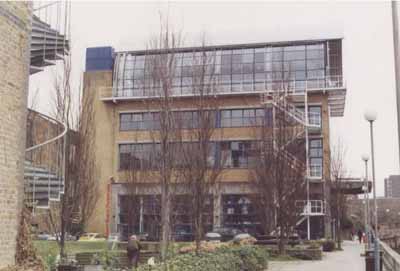
Lo studio di Richard Rogers a Londra, sul Tamigi
Photo by Arch. Paola De Rosa
© Archivio Archimagazine
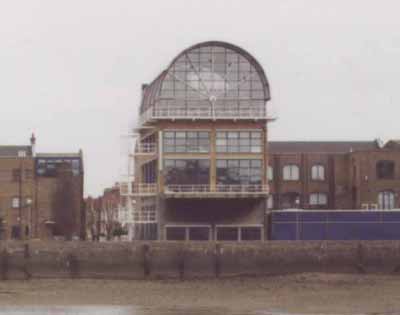
Lo studio di Richard Rogers a Londra, sul Tamigi
Photo by Arch. Paola De Rosa
© Archivio Archimagazine
Al loro ritorno in Inghilterra (1963), Rogers e Foster avviano, con le rispettive consorti Su Rogers e Wendy Foster, uno studio con il nome di Team 4. Insieme progettano alcuni edifici residenziali e industriali, tra cui la Reliance Controls Factory a Swindon (1967).
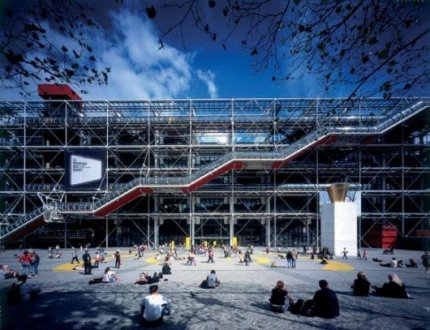
Richard Rogers
Centre Pompidou 1971-1977
Photo by Katsuhisa Kida
Courtesy Richard Rogers Partnership
Con Piano, Rogers realizza nel 1971 - 1977 il famoso Centre Pompidou di Parigi che ha rivoluzionato la concezione di museo: da monumento di élite a luogo popolare di scambio sociale e culturale nel cuore della città. Il Beaubourg - è anche con questo nome noto il Centre - diviene, in breve tempo, il luogo di cultura più visitato al mondo, con una media di sette milioni di visitatori l'anno, al punto che è costretto a chiudere, per un periodo, proprio per i suoi tanti visitatori. Centomila metri quadrati nel cuore di Parigi "una sorta di nave spaziale …qualcosa di molto parigino nello spirito di fondo: la sua struttura è un montaggio artigianale di migliaia di piccoli pezzi fatti praticamente a mano. In questo senso si iscrive nella grande tradizione della costruzione metallica di Parigi."
Tra le opere più famose di Richard Rogers:
Lloyd's of London in the City of London (1978-1986)
Il Terminal 4, Barajas Airport in Madrid (1997- 2005) che ha vinto nel 2006 lo Stirling Prize
Il Leadenhall Building; the Millennium Experience;
La Wimbledon House, una casa per i genitori di Rogers degli anni 1960;
A New York, il progetto di una torre di 71 piani per il World Trade Center alla 175 Greenwich Street;
A Washington, D.C., una costruzione per uffici in costruzione alla 300 New Jersey Avenue;
La National Assembly for Wales a Cardiff;
la Nippon Television Headquarters a Tokyo, come pure molti altri progetti a Tokyo e nella Corea del Sud.
Fuori dal Regno Unito ha uffici a Barcellona, Madrid e Tokyo.
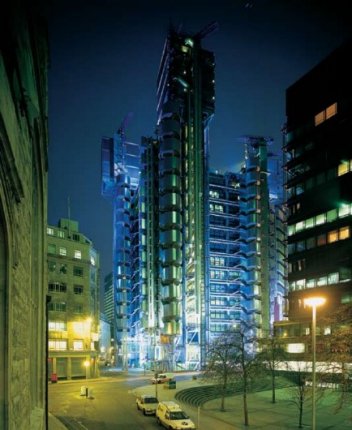
Richard Rogers
Lloyd's of London - 1978-1986
Photo by Richard Bryant/Arcaid
Courtesy Richard Rogers Partnership
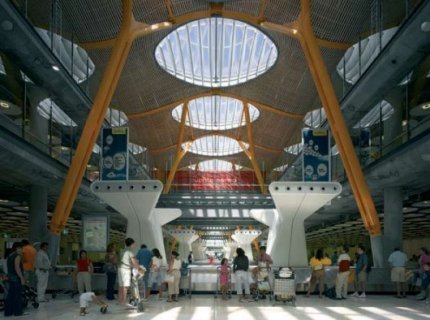
Richard Rogers
Terminal 4 - Madrid Barajas Airport - 1997-2005
Below: baggage collection area
Photo by Richard Bryant/Arcaid
Courtesy Richard Rogers Partnership
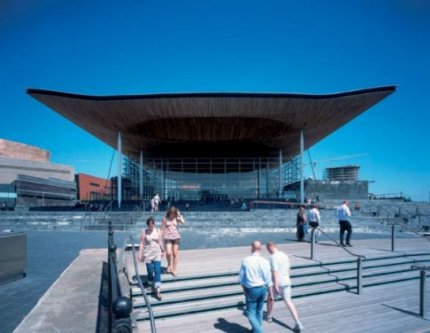
Richard Rogers
National Assembly for Wales - 1998-2005
Photo by Katsuhisa Kida
Courtesy Richard Rogers Partnership
Il 29 marzo 2007 è stato annunciato, a Los Angeles, il conferimento del Pritzker Architecture Prize 2007 a Richard Rogers - della Richard Rogers Partnership con sede a Londra. La cerimonia formale di assegnazione del premio verrà celebrata il 4 giugno a Londra. L'architetto 73enne riceverà nella The Banqueting House, progettata da Inigo Jones, nel 1619, una borsa di centomila dollari ed il medaglione di bronzo.
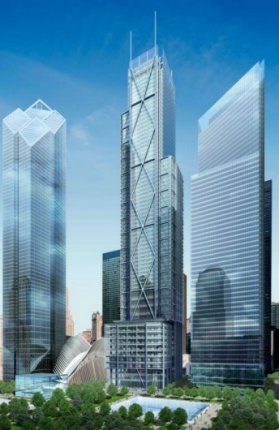
Richard Rogers
175 Greenwich Street, World Trade Center Site, New York City 2006
Photomontage by Team Macarie
Courtesy Richard Rogers Partnership

Richard Rogers
175 Greenwich Street World Trade Center Site, New York City 2006
Left: site plan
Below: elevation looking east
Photomontage by Team Macarie
Courtesy Richard Rogers Partnership
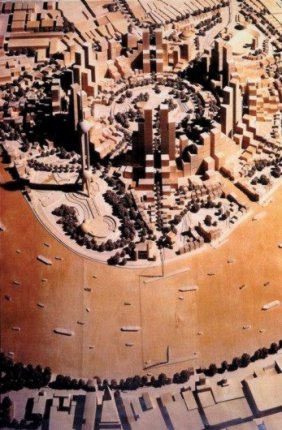
Richard Rogers
Shanghai Masterplan 1992-1994
Massing model
Courtesy Richard Rogers Partnership
Il Presidente della The Hyatt Foundation, Thomas J. Pritzker, nell'annunciare la scelta della giuria, ha riportato la motivazione dell'assegnazione del premio:
"Nato in Italia, a Firenze, formatosi a Londra presso l'Architectural Association e dopo negli Stati Uniti presso la Yale University, Rogers ha maturato un'ampia visione come la sua formazione. Nei suoi scritti, attraverso la sua consulenza e il suo lavoro di pianificazione su larga scala, Rogers è un fautore della vita urbana convinto della capacità della città di essere un catalizzatore per gli scambi sociali."
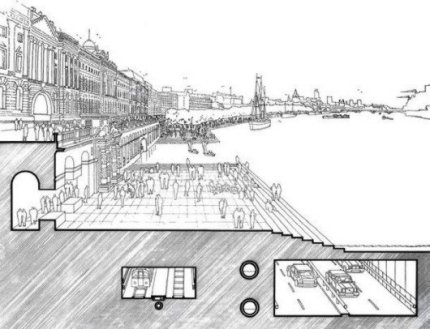
Richard Rogers
London as it could be - 1986
Riverside Walkway
Courtesy Richard Rogers Partnership
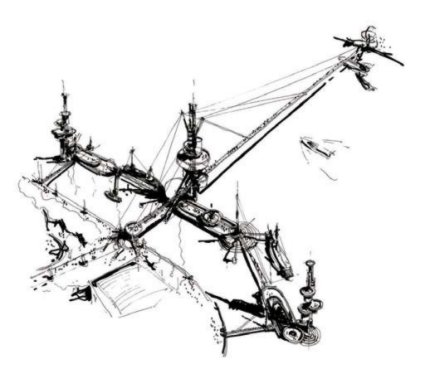
Richard Rogers
London as it could be - 1986
Riverside Walkway
Pedestrian Bridge
Courtesy Richard Rogers Partnership
Afferma Rogers, sulla sua visione della città del futuro, che le città "non saranno più suddivise come oggi in ghetti isolati in mono attività, ma assomiglieranno alle città del passato riccamente stratificate. Vivere, lavorare, fare shopping, studiare e divertirsi saranno attività sovrapposte e accolte in strutture varie in continua evoluzione".
Pluripremiato, ha ricevuto tra gli altri il Praemium Imperiale nel 2000, il Thomas Jefferson Memorial Foundation Medal nel 1999, l'Arnold W. Brunner Memorial Prize from the American Academy & Institute of Arts and Letters nel 1989, la Royal Gold Medal for Architecture nel 1985.

Richard Rogers
Millennium Dome, London - 1996-1999
Section drawingCourtesy Richard
Rogers Partnership
Rogers è il quarto inglese premiato col Pritzker. Il primo è stato James Stirling nel 1981, poi Lord Foster (Norman Foster) nel 1999 e Zaha Hadid in 2004. È il 31° premiato dalla fondazione del premio avvenuta nel 1979. A Rogers è stato conferito il titolo di Lord Rogers of Riverside nel 1996.
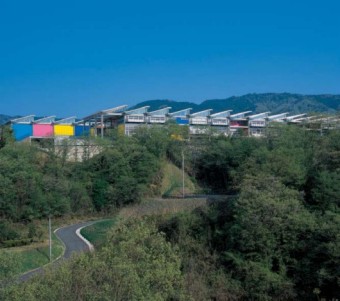
Richard Rogers
Minami Yamashiro School, Kyoto, Japan 1995-2003
Photo by Katsuhisa
Courtesy Richard Rogers Partnership
Finalmente, un conferimento che inietta nuova linfa al Pritzker che negli ultimi anni con le assegnazioni a Glenn Murcutt (2002), Thom Mayne (2005), Paulo Mendes (2006) ha assegnato premi da "amatori" della disciplina.
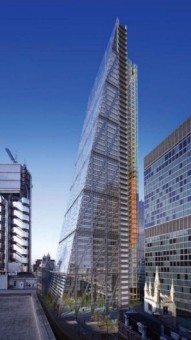
Richard Rogers
The Leadenhall Building - 2002-2006
Photomontage by Cityscape
Courtesy Richard Rogers Partnership
La giuria di quest'anno che ha scelto Richard Rogers è così composta:
Chairman, Lord Palumbo, internationally known architectural patron of London, chairman of the trustees, Serpentine Gallery, former chairman of the Arts Council of Great Britain, former chairman of the Tate Gallery Foundation, and former trustee of the Mies van der Rohe Archive at the Museum of Modern Art, New York;
e in ordine alfabetico:
Shigeru Ban, architect and professor at Keio University, Tokyo, Japan;
Balkrishna Vithaldas Doshi, architect, planner and professor of architecture of Ahmedabad, India;
Rolf Fehlbaum, chairman of the board, Vitra in Basel, Switzerland;
Carlos Jimenez, professor, Rice University School of Architecture, principal, Carlos Jimenez Studio in Houston, Texas;
Victoria Newhouse architectural historian and author, founder and director of the Architectural History Foundation, New York, New York;
Renzo Piano, architect and Pritzker Laureate, of Paris, France and Genoa, Italy;
Karen Stein, editorial director of Phaidon Press in New York.
Martha Thorne, formerly a curator of architecture at the Art Institute of Chicago, è il direttore esecutivo.
Elenco degli insigniti del Pritzker Prize degli anni precedenti
1979
Philip Johnson of the United States of America
Presented at Dumbarton Oaks, Washington, D.C.
1980
Luis Barragán of Mexico
Presented at Dumbarton Oaks, Washington, D.C.
1981
James Stirling of the United Kingdom
Presented at the National Building Museum,
Washington, D.C.
1982
Kevin Roche of the United States of America
Presented at The Art Institute of Chicago, Illinois
1983
Ieoh Ming Pei of the United States of America
Presented at The Metropolitan Museum of Art,
New York, New York
1984
Richard Meier of the United States of America
Presented at the National Gallery of Art, Washington, D.C.
1985
Hans Hollein of Austria
Presented at the Huntington Library, Art Collections and Botanical
Gardens, San Marino, California
1986
Gottfried Böhm of Germany
Presented at Goldsmiths' Hall, London, United Kingdom
1987
Kenzo Tange of Japan
Presented at the Kimbell Art Museum, Fort Worth, Texas
1988
Gordon Bunshaft of the United States of America
and
Oscar Niemeyer of Brazil
Presented at The Art Institute of Chicago, Illinois
1989
Frank O. Gehry of the United States of America
Presented at the Todai-ji Buddhist Temple, Nara, Japan
1990
Aldo Rossi of Italy
Presented at Palazzo Grassi, Venice, Italy
1991
Robert Venturi of the United States of America
Presented at Palacio de Iturbide, Mexico City, Mexico
1992
Alvaro Siza of Portugal
Presented at the Harold Washington Library Center
Chicago, Illinois
1993
Fumihiko Maki of Japan
Presented at Prague Castle, Czech Republic
1994
Christian de Portzamparc of France
Presented at The Commons, Columbus, Indiana
1995
Tadao Ando of Japan
Presented at the Grand Trianon and the Palace of Versailles, France
1996
Rafael Moneo of Spain
Presented at the construction site of The Getty Center,
Los Angeles, Calfiornia
1997
Sverre Fehn of Norway
Presented at the construction site of The Guggenheim Museum,
Bilbao, Spain
1998
Renzo Piano of Italy
Presented at the White House, Washington, D.C.
1999
Sir Norman Foster (Lord Foster) of the United Kingdom
Presented at the Altes Museum, Berlin, Germany
2000
Rem Koolhaas of The Netherlands
Presented at the The Jerusalem Archaeological Park, Israel
2001
Jacques Herzog and Pierre de Meuron of Switzerland
Presented at Thomas Jefferson's Monticello
Charlottesville, Virginia
2002
Glenn Murcutt of Australia
Presented at Michelangelo's Campidoglio in Rome, Italy
2003
Jørn Utzon of Denmark
Presented at Royal Academy of Fine Arts of San Fernando, Madrid, Spain
2004
Zaha Hadid of the United Kingdom
Presented in the State Hermitage Museum, St. Petersburg, Russia
2005
Thom Mayne of the United States of America
Presented at the Jay Pritzker Pavilion, Millennium Park
Chicago, Illinois
2006
Paulo Mendes da Rocha of Brazil
Presented at the Dolmabahçe Palace
Istanbul, Turkey